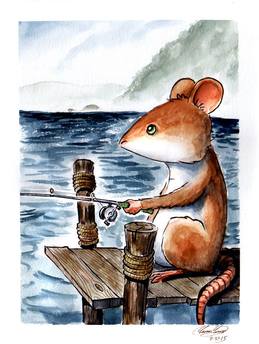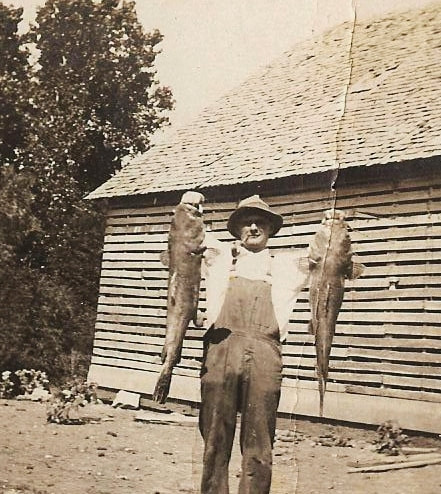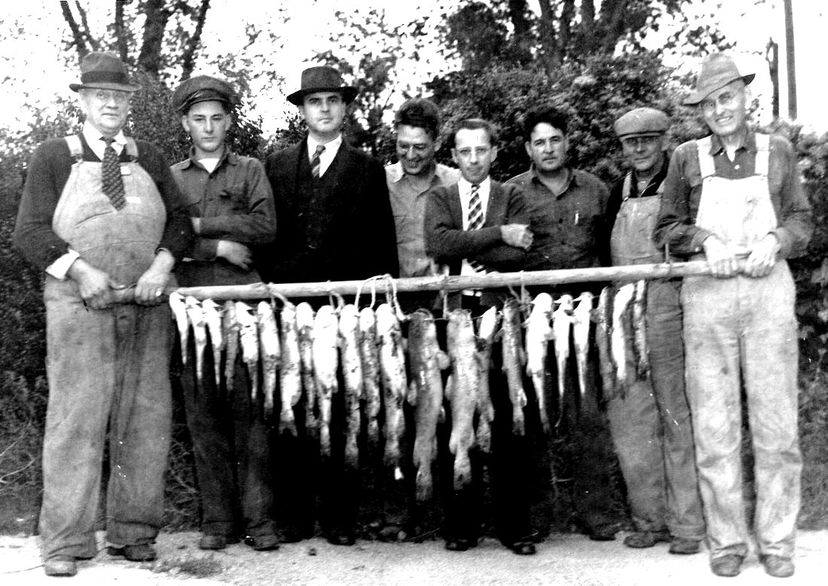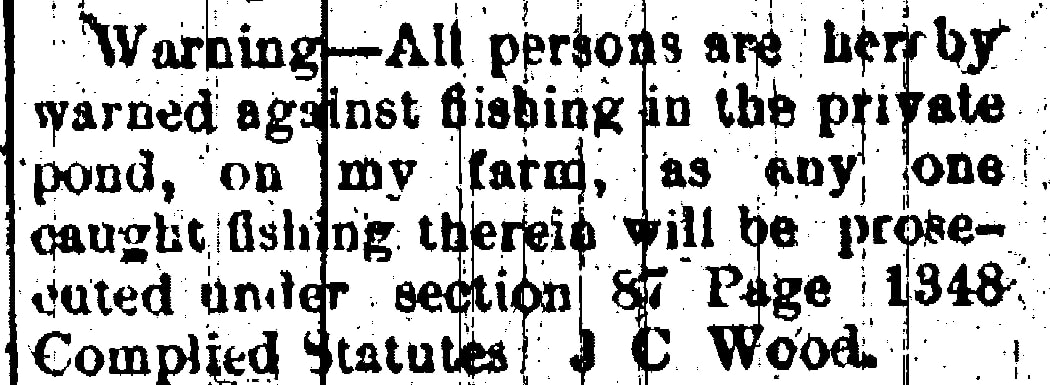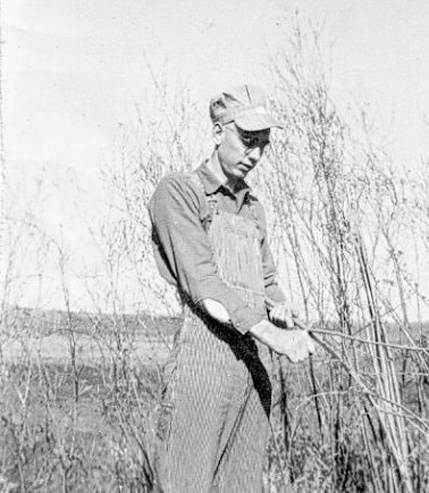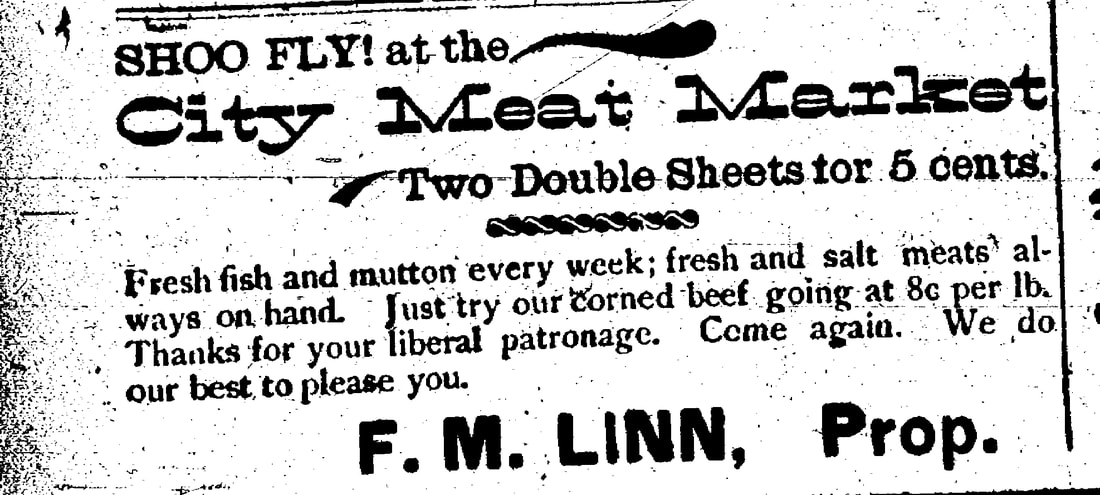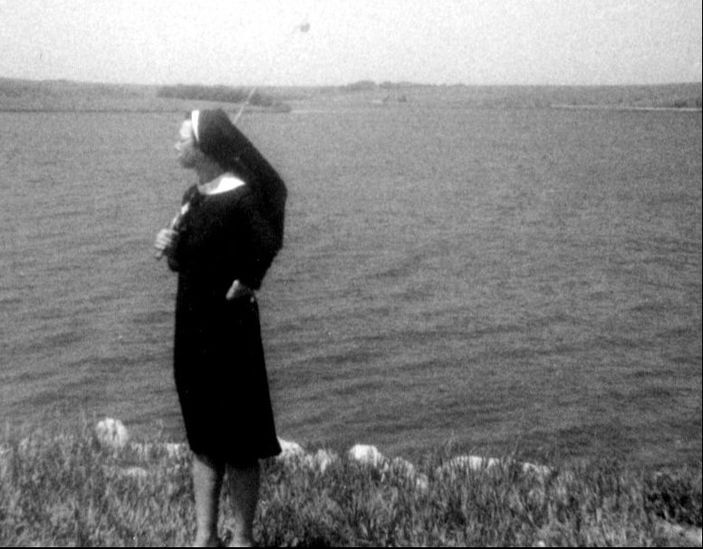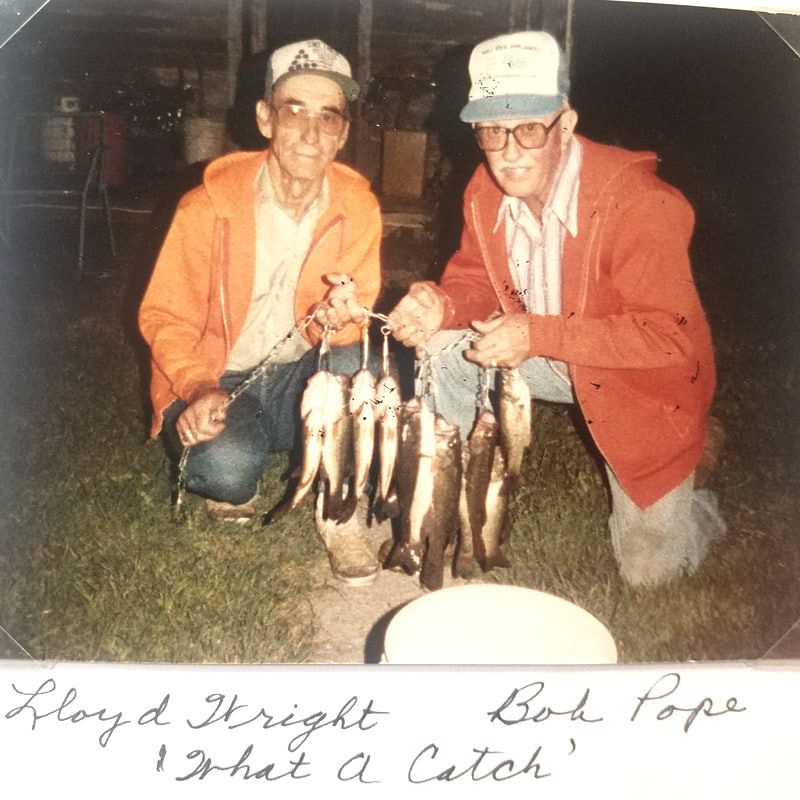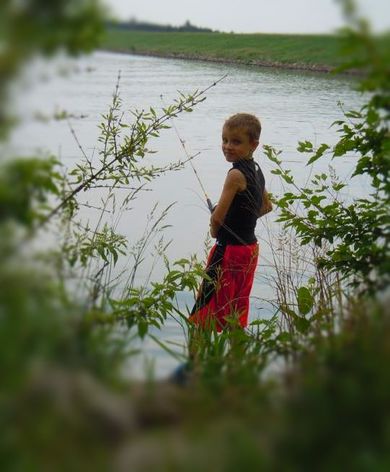FISHING
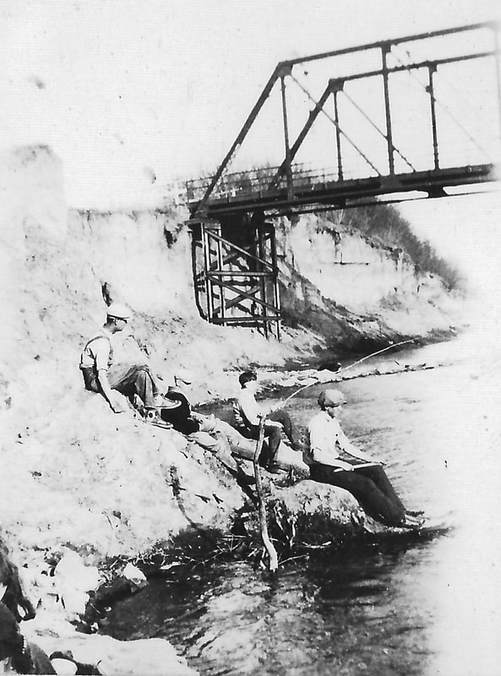
Fishing at the Nemaha River, photo by charter Historical Society member Mary Snabl Sturgeon (1914-2003). It was taken in 1930 and shows her class members on their sophomore picnic, The sophomores graduated in 1932. Mary donated a photo album with pictures of her class from elementary school through years of many alumni reunions. Photo 801
|
"Wilber cutting willow bank lines, April 1949." Photo 4066, another photo shared of her grandpa by Valerie Binder.
Missy Freeman tells what a bank line is: "Bank lines are placed along the banks of the river. You attach a line and usually live bait to, to catch fish. Dead fallen trees along the bank are the best. You leave it on the bank and check on it once or twice a day." Jackie Uhri says, too: "Bank lines are the best. Been there, done that!" Missy and Jackie say that the lines could be made by leaving the tree where it was and bending it to the water or by cutting the tree off. |
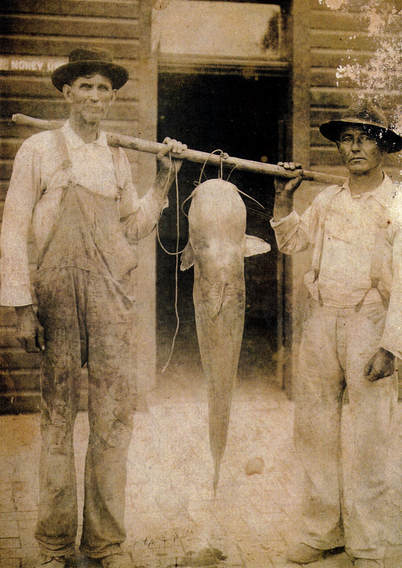
This is a family photo from Ines Roberts (1903-1989). She lived several places in Table Rock, the last years of her life in a small house across from the northwest corner of the cemetery, on the lot in which Historical Society member Amy Hunzeker's house now stands. This is Emanuel "Manny" Jeffers (1864-1938), cousin of Ines's husband Sam Roberts' (1893-1962) with Sam's good friend "Peke" Furnas, both of Brownville, are showing a catfish caught in the Missouri River. Ines, her husband, and a partner, operated a ferry across the river until after a bridge was built. Photo shared by Historical Society member Sharla Cerra.
true fish stories
Historical Society member Sharla Cerra shares some family stories:
The mother of my mother Becky Sitzman (1934-2007) was Ines Roberts (1903-1989). She and her husband Sam lived on the banks of the Nemaha River at Brownville for many years. When Grandma had first got married just weeks after meeting Grandpa, she discovered her new husband loved to hunt and fish. She had come down from Rosalie, Nebraska and in Brownville she found herself going out on many a fishing and hunting trip. Anyway, at Brownville, they operated a ferry across the Missouri River, with partner Fritz Leseberg, but Grandpa also had a fish shack by the river where he sold fish he had caught.
Grandma told me that Grandpa once caught a huge catfish. There were many large catfish to be caught in those days before the Missouri River was straightened and when the river meandered. But this one outdid them all. It was so big that if you stretched it across the backseat of the Model T it would stick out on both sides.
Grandpa took the fish to the Nemaha County fair and exhibited it in a cattle tank. You could see it for 25 cents and that was a lot of money in those days. However, it was quite a fish to see and there were a lot of takers. Eventually, of course, the fish was ready to kick the bucket; the cattle tank was not big enough. Grandpa then sold the fish to a restaurant where it was cut up into catfish steaks, fried, and sold. There were probably quite a few people eating off that fish!
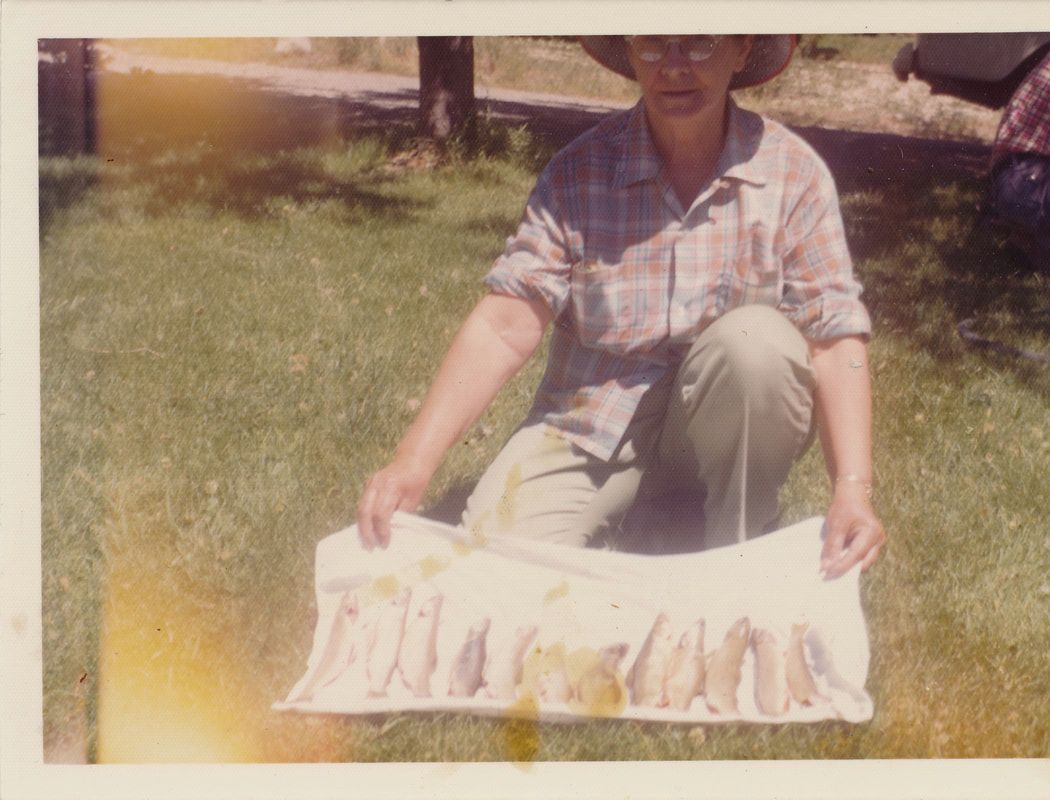
This is Crystal Gaskill Knapp (1905-1998). She and her husband Jeff operated Knapp's IGA for many years. It was on the southside of the Square in the Purcell buildings, which is long gone. Crystal loved to fish, and did so to the end of her days. She didn't care what size the fish were, she just enjoyed the doing of it. It was her way of relaxing, not a sport. She fished at Taylor Branch, the Nemaha, the Humboldt lake, Joe's lake, and anywhere there was a body of water. It was not an uncommon sight to see her walking up Luzerne from the river or the branch with her day's catch. This is a family photo of Historical Society member Sharla Cerra. Crystal's mother and Sharla's great great aunt Della Gaskill were sisters.
And another from Kim Pope Sharpe:
